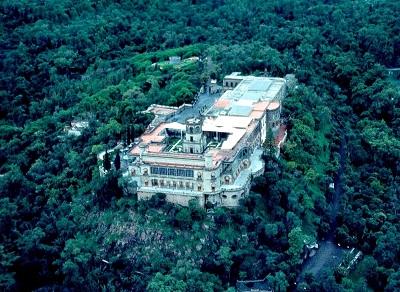On January 29, 2012, Contested Visions in the Spanish Colonial World completed its run at LACMA. Since then, we have been busy planning the presentation of the exhibition at the Museo Nacional de Historia (“Castillo de Chapultepec”) in Mexico City, where it opens today as Miradas Comparadas en los virreinatos de América. The Castillo is a special place. It is built atop the Chapultepec hill (the word chapultepec comes from the Náhuatl chapoltepēc, which means “at the grasshopper’s hill”). The hill was a sacred place for the Aztecs. In colonial times it became the site of the viceroys’ summer palace and during the nineteenth century the home of the ill-fated Austrian emperor Maximilian I and his wife Carolta. The place is filled with history.
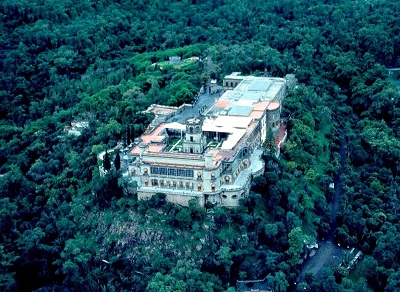
View of the Castillo de Chapultepec, Mexico City. Photo: Gliserio Castañeda-INAH.
Over the course of the last few months we have worked closely with our partners from the Instituto Nacional de Antropología e Historia (INAH) in redefining the checklist, planning the installation, and completing the translation of the book in Spanish. Some works displayed at LACMA were too fragile to withstand additional travel (such as those made of feathers or delicate Andean textiles).
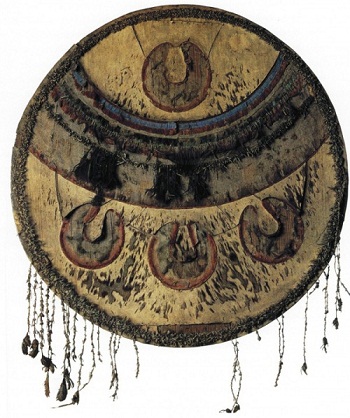
Ceremonial Shield (Chimalli), Mexico, Aztec,16th century; duck, thrush, macaw, Blue Cotinga feathers; cotton and beeswax adhesive, Museo Nacional de Historia, CONACULTA–INAH, Mexico City.
Among the many rewarding aspects of our collaboration with INAH was selecting new works to show at the Castillo, including an astounding sixteenth-century chimalli(ceremonial shield) from the Castillo’s own collection. The shield, one of the only pre-Columbian featherworks to have survived the conquest, is said to have been a gift of the conqueror Hernán Cortés to King Charles V. (It was returned to Mexico in 1865 at the behest of Emperor Maximilian.)
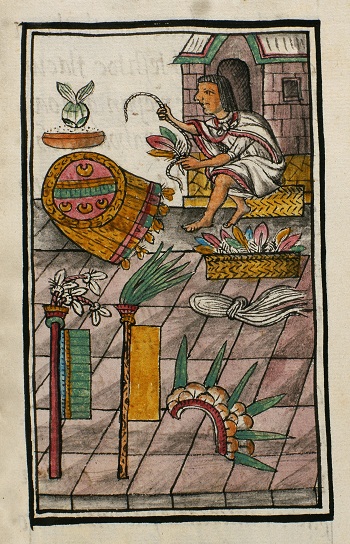
“Feather artist (amanteca) with ceremonial shield (chimalli) and ritual objects made of special feathers,” from Bernardino de Sahagún, Florentine Codex, book 12 (Mexico, 1555–79). Biblioteca Medicea Laurenziana, Florence.
Feathers were endowed with sacred meaning since preconquest times and associated with the Aztec patron deity Huitzilopochtli. Local amantecas (feather artists) created exceptional works by skillfully trimming and applying the iridescent feathers onto various surfaces. The technique greatly captured the imaginations of Europeans. For example, in describing the gifts sent by Cortés to King Charles V, a Spanish chronicler noted that the king marveled at how “brilliantly the use of feathers replaced that of the brush.”
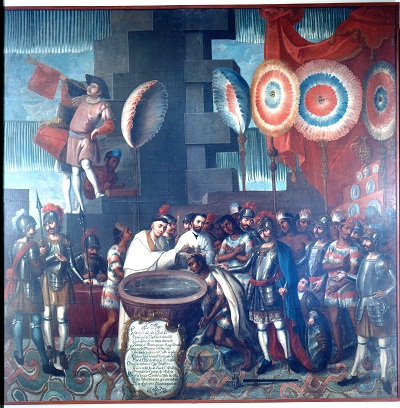
Attributed to José Vivar y Valderrama, Baptism Scene, 18th century, oil on canvas, Museo Nacional de Historia, CONACULTA–INAH, Mexico City.
Another extraordinary work that viewers will see in Mexico is a monumental painting depicting the baptism of an Aztec ruler. The work measures approximately 156 x 161 inches and was therefore too large to bring to Los Angeles. To mark the occasion, a Spaniard is depicted playing a horn, while an Aztec man plays a horizontal drum (teponaztli)an ancient percussion instrument used during rituals.
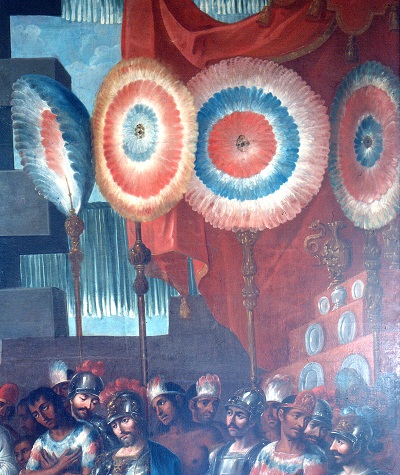
Attributed to José Vivar y Valderrama, Baptism Scene (detail), 18th century, oil on canvas, Museo Nacional de Historia, CONACULTA–INAH, Mexico City.Historia, CONACULTA–INAH, Mexico City.
The display of huge indigenous feather fans and sumptuous silver plates (associated with the Spaniards) reinforces the pact between the Indian and Spanish polities. A Spanish scribe carefully documents the historic event for posterity. Although the painting depicts a sixteenth-century event, the painting dates from two centuries later. It was designed to commemorate this foundational episode of the conquest and the importance of the Mercedarian order.
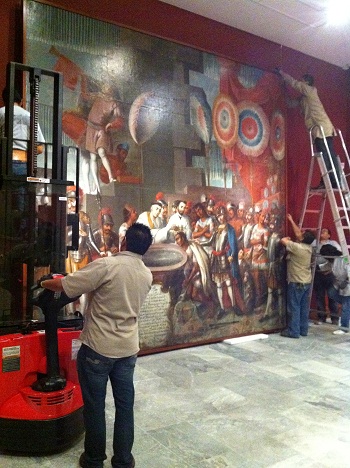
Installation shot at the Castillo de Chapultepec, Mexico City. Photo: Ilona Katzew
These are only a few examples of new works in the show. We hope some of you will be able to enjoy the exhibition in its new incarnation in Mexico City.
Ilona Katzew, curator and department head, Latin American Art



